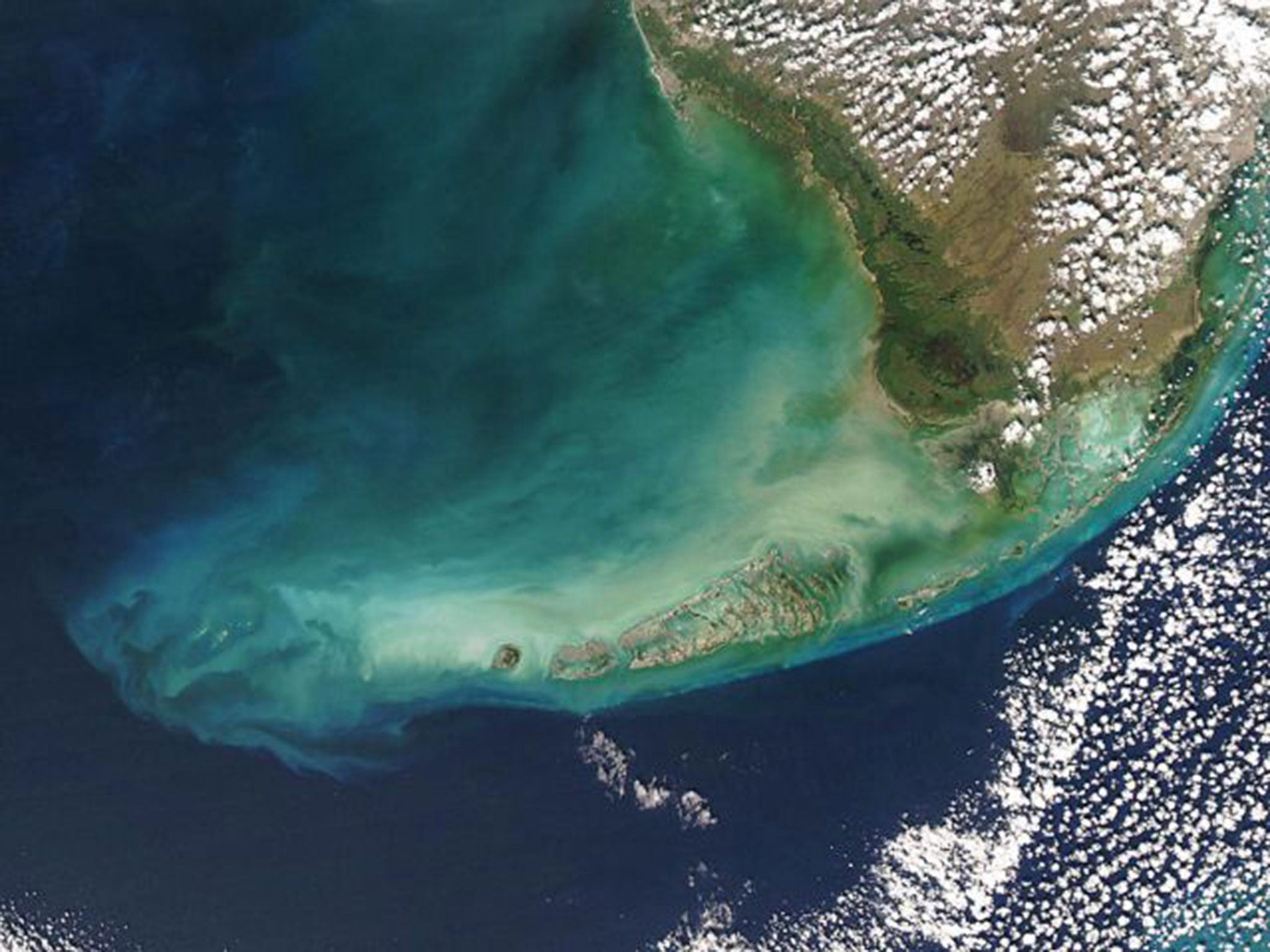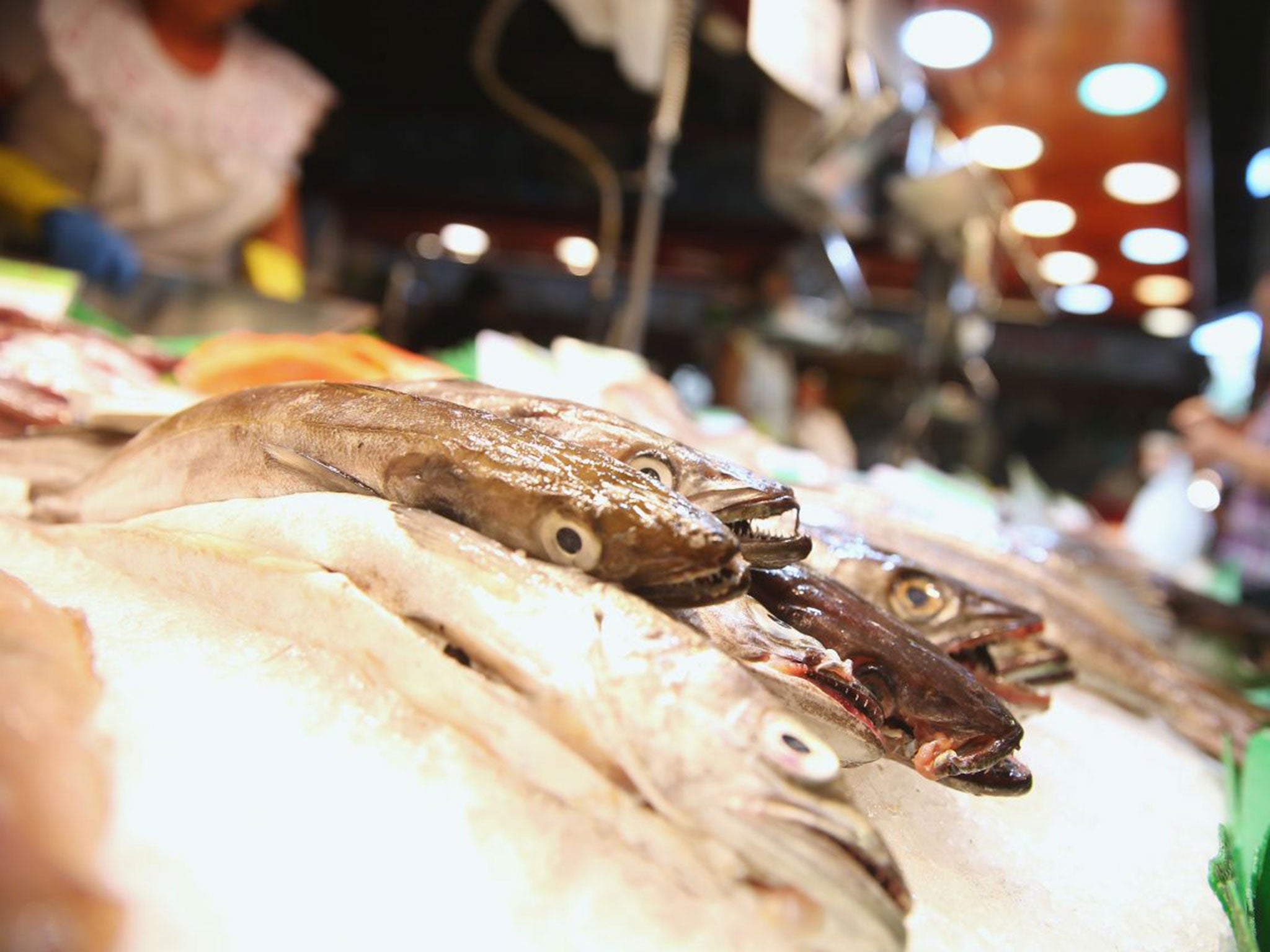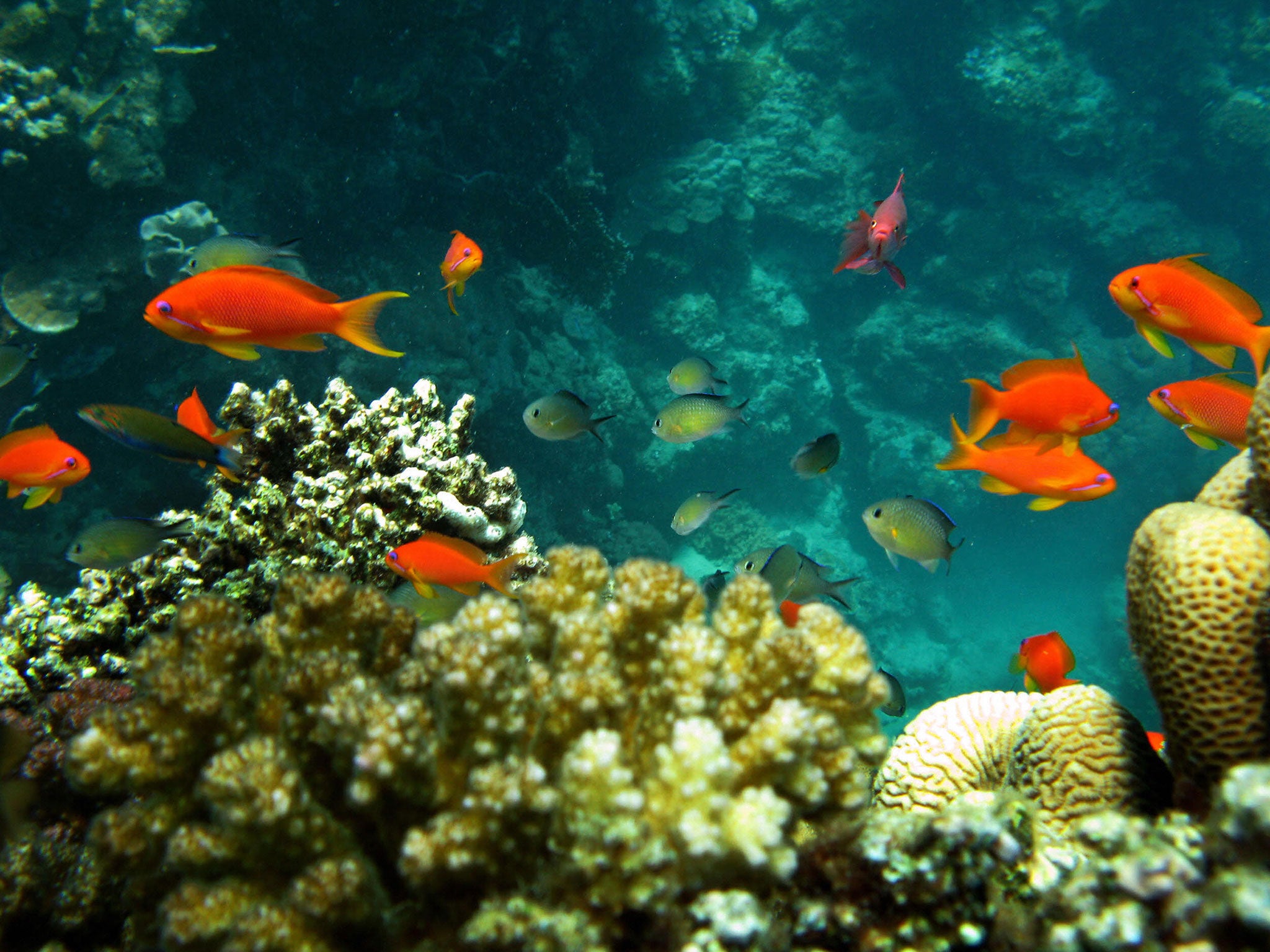Can scientists save the world's sea life from "ocean acidification"?
By the end of the century, the only living things left in our oceans could be plankton and jellyfish. Alex Renton meets the scientists who are trying to turn the tide

Your support helps us to tell the story
From reproductive rights to climate change to Big Tech, The Independent is on the ground when the story is developing. Whether it's investigating the financials of Elon Musk's pro-Trump PAC or producing our latest documentary, 'The A Word', which shines a light on the American women fighting for reproductive rights, we know how important it is to parse out the facts from the messaging.
At such a critical moment in US history, we need reporters on the ground. Your donation allows us to keep sending journalists to speak to both sides of the story.
The Independent is trusted by Americans across the entire political spectrum. And unlike many other quality news outlets, we choose not to lock Americans out of our reporting and analysis with paywalls. We believe quality journalism should be available to everyone, paid for by those who can afford it.
Your support makes all the difference.In the great halls of La Boqueria, Barcelona's central market, tourists, foodies and cooks gather every day to marvel at the fresh food, like pilgrims at the site of a miracle. The chief shrines are the fish counters, where thousands of sea creatures, making up dozens of species, gleam pink and grey on mounds of ice. But to many ocean scientists this is not a display of the ocean's bounty but a museum – by the end of this century, many of these animals may be history, due to man's reckless abuse of the planet. As we keep dumping greenhouse gases into the air, the oceans keep sucking them up, making the waters deadly to their inhabitants.
On the Boqueria's fish stands I count 10 types of bivalves – creatures such as clams, oysters and mussels that use calcium carbonate to make their endlessly varied shells. In as little as 20 years they will be very different and, in some parts of the world, entirely gone. Then there are the ranks of huge Asian prawns and tiny shrimps, terracotta crabs from Scotland, and lobsters, magnificent admirals in blue, fringed with gold. Lucky for them, these creatures make their shells differently (mostly out of a polymer called chitin), so the rapidly acidifying waters of our oceans won't dissolve them as it will the exteriors of the bivalves. But the acidification – which some scientists believe is the fastest change in the ocean's chemistry in 300 million years – appears to harm the working of the gills and change the behaviour of the crustaceans when they are very young.
On the crushed ice sit a dozen kinds of finned creatures that the Spanish love – monkfish, hake, sardines, tuna. They eat more fish than anyone else in Europe. The effect of changing ocean chemistry on fish health, longevity and reproduction is not yet certain. But even now, many species on the Boqueria stalls are also on one or more European "at risk" lists: under threat because of overfishing or changes in the chain of foods that supply them, or from the bigger threat of the changing ocean biogeochemistry. The last is the least understood of these phenomena. Along the coasts and out in the deep, huge "dead zones" have been multiplying. They are the emptiest places on the planet, where there's little oxygen and sometimes no life at all, almost entirely restricted to some unicellular organisms like bacteria. Vast blooms of algae – organisms that thrive in more acid (and less alkaline) seawater and are fed by pollution – have already rendered parts of the Baltic Sea pretty much dead. A third of the marine life in that sea, which once fed all of Northern Europe, is gone and may already be beyond hope of recovery.
"There's a profound game-changing event going on in the life of the sea," says Callum Roberts, a professor of marine conservation at the University of York. "Changes in alkalinity are going to cause massive reorganisation of marine life, impacts on marine food webs, productivity, all sorts of things. We're heading for a car crash."
Many of these risks are caused by one of the world's most pressing problems: climate change. Rising greenhouse gases in the atmosphere are causing global temperatures to rise, which is leading to the melting of the polar ice caps, which in turn has resulted in rising sea levels and a host of ecological issues.
It's also causing the chemical make-up of the world's oceans to change so rapidly. Carbon dioxide, one of the key perpetrators in the line-up of man-made greenhouse gases, is absorbed by seawater, causing a chemical reaction near the ocean surface that results in lowered pH levels. And about one-third of all the man-made carbon dioxide released into the atmosphere ends up absorbed by the oceans. Carles Pelejero, a scientist working less than a mile from La Boqueria at the Institut de Cienciès del Mar (ICM), on Barcelona's seafront, calls it "climate change's evil twin".
"In pre-industrial times the ocean's pH was 8.2. It has already gone down to 8.1," says Pelejero. "Depending on what we do, it will reach an average of 7.8 or 7.7 by 2100. It hasn't been that low for 55 million years."
Pelejero leads part of the ICM's marine biogeochemistry research, but his field is even more specific: marine paleo-reconstruction. You might call it seabed archaeology; it uses drills to take samples from deep in the sediment at the bottom of the ocean. Scientists can use those samples to work out how the geochemistry of sea creatures has changed over the millennia. Pelejero started in this business in the mid-1990s, using the remains of plankton in the sediments on the ocean floor to determine historic sea surface temperatures.

In 1998, while studying a graph at a conference, Joanie Kleypas, an American biologist working on coral reefs, had a eureka moment. When she realised that the lowered alkalinity at the end of the 21st century would in effect corrode the calcium carbonate foundation of the reefs to destruction, she was so horrified she left the room to be sick. Her paper, published in the journal Science in 1999, was an alarm call. Other scientists quickly dubbed the effect "ocean acidification"– although the seas would not actually turn to acid, the phrase, they reckoned, would emphasise the urgency and get action. Coral reefs are necessary to an estimated 25 per cent of all marine life, including 4,000 species of fish. They are the rainforests of the sea.
Around the same time, Pelejero's colleagues turned their core-sampling techniques to work out how the ocean and its animals behaved long ago, when the water pH was lower. What they found was horrifying. During a 100,000-year-long event known as the Palaeo-Eocene Thermal Maximum (PETM), which occurred between the Palaeo and Eocene epochs, 55 million years ago, "you see that the sediment is quite white from the fossil shells – then suddenly it turns red," Pelejero says. "Because there are no shells at all. Then it turns white again – but the change back took more than 100,000 years." The first change from white to red represents a sudden die-off of shell-based life; the turn back to white shows the gradual return of shellfish over time. If projections hold, the pH change that killed off or radically altered many of the deep ocean shell animals will arrive again at the end of this century.
What worries Pelejero most is the rapidity of today's changes. The same shifts that happened over the course of a few thousand years during the PETM are now due to happen over just a few centuries, counting from the beginning of the Industrial Revolution and the widespread use of fossil fuels. "Though pH has been lower in the past, this time the changes are happening about 10 times faster. And that means there is no time for species to evolve and adapt, or the ocean to buffer itself," Pelejero says. "It's clear that the ocean is acidifying, much clearer than that the world is warming. And we know that most of the effect is caused by man's actions. The only argument among scientists is over how much damage is being done."
Already some effects are being seen. Across the world, shells of some animals are thinner than they were 300 years ago. An acidification spike around the coast of British Columbia, Canada, in February 2014 wiped out 10 million scallops. Foraminifera, the tiniest shelled plankton in the ocean, are having trouble growing – and plankton is the food base of every animal in the sea. Coccolithophores, the shelled plankton that process sunlight like a plant, and whose remains built the White Cliffs of Dover, suffer from changes in ocean chemistry.
Pteropods, tiny swimming snails, are the main diet of cold-water fish most commonly consumed in both Europe and North America – salmon, haddock, cod and pollack. In the lab, pteropods dissolve in lowered alkali waters, like a tooth in Coca-Cola. In the Arctic, where acidification is progressing fastest, pteropods may already be on the way out. It is as though the Earth were losing its grass, and the cows had nothing to eat.
A day after visiting the fish markets, I lounged on the deck of a tiny boat off the northern Catalan coast, as oceanologists threw up into the lurching waves around us. We were off to take ICM's monthly water samples. The boat is skippered by a remarkable man, 63-year-old Josep Pascual. As a boy, he went out in this boat with his father and grandfather to fish. "I used to listen to them, talking about the weather and the sea temperature, and I got interested."
He decided to add some hard data to the family debate. So since the mid-1960s he has been building his own instruments, and taking a daily record of sea temperatures at different depths in the Mediterranean current off the fishing port of Estartit, Spain. "I'd read in a book that there were no tides in the Mediterranean – I wanted to prove that was wrong," Pascual says. He succeeded, and he has also shown that the average sea level in the Mediterranean has risen about 3.5 inches over the past 24 years. That is in line with the global calculations of melting ice cover made by climate change scientists. The rising sea levels, of course, are caused by greenhouse gases in the atmosphere – which are also what's causing acidification.

Pascual's work came to the attention of the ICM in the early 1970s. Ever since then, ICM and Pascual have worked together. The fishing nets on the Fiera del Mar are now replaced by global positioning systems, depth-measuring tools and complex thermometer instruments. They have done this long enough to prove significant warming of the Costa Brava sea.
Seven years ago, sponsored chiefly by the Catalan and Spanish governments, Pascual, Pelejero and their assistants started making monthly trips to measure the ocean's acidity. These have yet to produce conclusive results – there hasn't yet been enough time to confirm the clear drop in pH that has been observed out in the open oceans.
Pascual is a smiling, sea-worn man, his nut-brown face in sharp contrast to the biochemists' laboratory pallor. I ask what he really thinks is going on. "What I'm shocked by most is the rising sea level – and I am convinced this is caused by climate change, and that it is mankind that has done it," he says. "It's worrying, because the oceans are so important in capturing the carbon. They thermo-regulate the planet. These changes in their systems are very big, and they should make us worry."
The one thing that the Boqueria fishmonger doesn't sell is jellyfish (there's not much demand for them in Spain, or anywhere else in Europe), though you can find them, dried to a plastic scab, in some Chinese supermarkets. There are those who say that jellyfish and plankton are all that your average wild seafood eater will have for supper by the end of the century – the very rich will likely still be able to pay for ultra-rare food items. That's because, as the food chain's intricate links collapse, the complex species will go first, leaving only the most simple. "The oceans [will] revert to the earliest days of multicellular life," Roberts drily puts it. There's a terrifying argument that jellyfish – who rather enjoy acidification – are already taking over the seas, if not the world.
The answers are not easy. Some of the clever "geoengineering" suggestions offered to tackle global warming – such as artificially cutting off sunlight – won't work for the oceans, because we can't just incrementally slow down the acidification – we have to remove the excess carbon dioxide that's already out there in the atmosphere.
Doing that takes economically painful initiatives – replanting vast areas of forest to recapture carbon, for example, and, above all, simply stopping the burning of fossil fuels.
There are some causes for hope. Some world leaders are beginning to take these threats more seriously. In June, for example, the Obama administration announced a series of measures aimed to conserve the ocean as a key food supply for more than three billion of us. These included more ocean sanctuaries to curtail overfishing, and new funds to research ocean biochemistry, including acidification.
Roberts, for his part, says that he has been happy to see that coral reefs have proved more adaptable – faster and faster at recovering from the effects of acid and ozone layer depletion – than scientists previously thought. Recent research suggests than in the more acidic waters predicted for the late 21st century, the reefs may survive a little better than Kleypas and her colleagues originally expected.
"That's got to be cause for hope," says Roberts. "But these are isolated instances – they say life is possible in these altered environments, they don't say that means species will thrive in 2100. Evidence from around the world is that they will not. We have the loss of one of the world's major habitats on the cards. It's already happening."
A version of this article appeared in Newsweek (c) Newsweek, Inc. All rights reserved.
Join our commenting forum
Join thought-provoking conversations, follow other Independent readers and see their replies
Comments